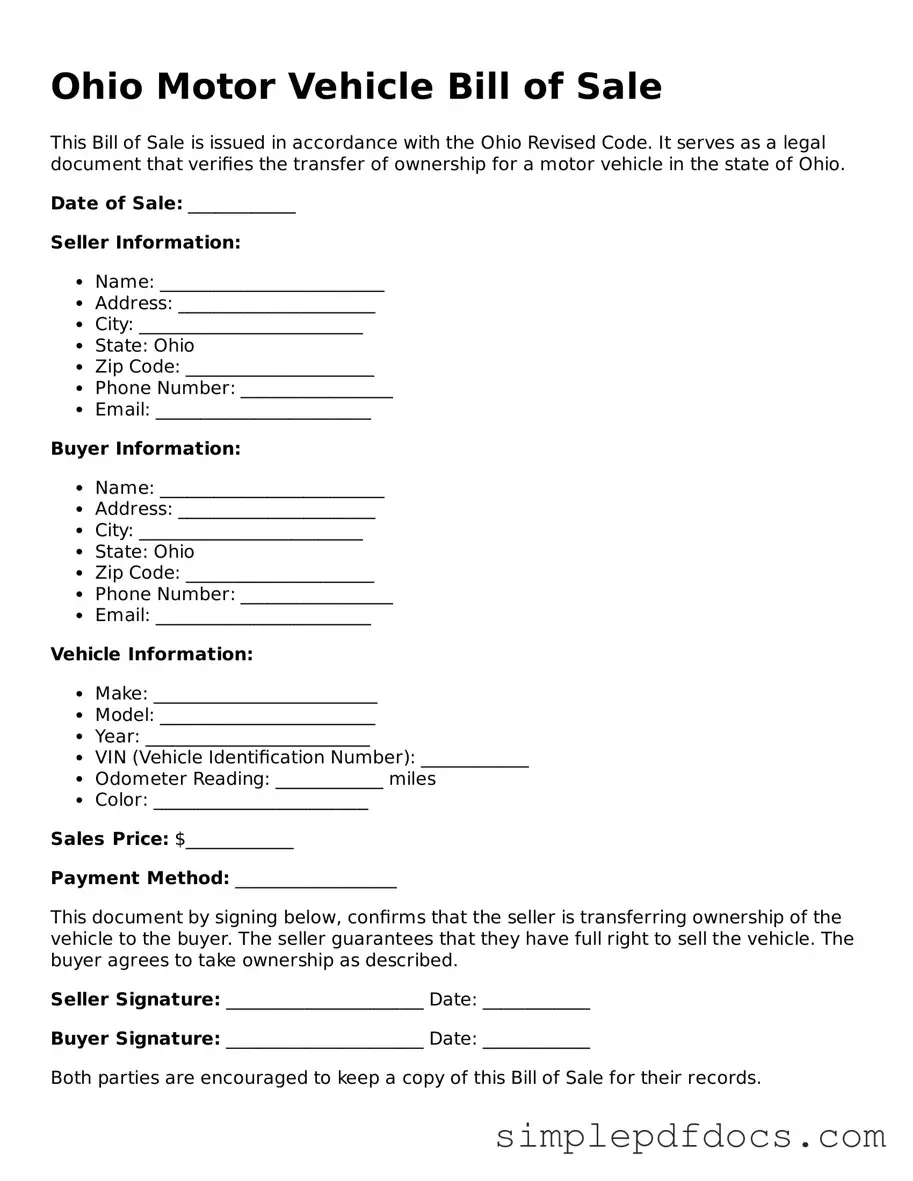When it comes to buying or selling a vehicle in Ohio, the Motor Vehicle Bill of Sale form plays a crucial role in ensuring a smooth transaction. This document serves as a written record of the transfer of ownership between the seller and the buyer, providing essential details that both parties need to protect their interests. Key aspects of the form include the identification of the vehicle, such as its make, model, year, and Vehicle Identification Number (VIN), which helps to confirm the specific vehicle being sold. Additionally, the form captures the names and addresses of both the seller and the buyer, establishing clear accountability. The sale price is also documented, which can be important for tax purposes and future reference. Furthermore, the Bill of Sale may include information about any warranties or representations made by the seller, thereby clarifying the condition of the vehicle at the time of sale. By completing this form, both parties can ensure that they have a mutual understanding of the transaction, which can prevent disputes down the line. In essence, the Ohio Motor Vehicle Bill of Sale is not just a piece of paper; it is a vital tool that fosters trust and transparency in the vehicle sales process.
